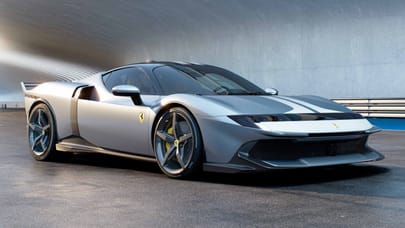
Opinion: here's how to make our roads safer... with loads of confusing signs
Want to make drivers more considerate? Don't give them fewer signs, give them LOADS MORE
A few years back, the German municipality of Bohmte implemented a definitely not mad strategy to improve driving standards in its town centre: removing all the road signs.
The theory? That drivers would be more considerate when they weren’t ordered what to do. The results of this trial were, it seems, inconclusive, though there was an encouraging 70 per cent rise in motorists asking who’d nicked all the signs to der Bahnhof. But recently I’ve been wondering whether Bohmte (and other similar ‘shared space’ schemes across Europe) got things back to front.
Here’s why. I live not far from the Hemel Hempstead magic roundabout. For those unfamiliar with Hertfordshire’s transport infrastructure, Hemel Hempstead is a town in southeast England, its finest feature a road junction known as the magic roundabout. Not magic, but very much a roundabout. In fact, many roundabouts.
If you’ve sampled similar setups in Swindon, High Wycombe or Colchester, you’ll know the score. Hemel’s magic roundabout is in fact six mini-roundabouts, arranged in a circle to form one mega-roundabout. Drivers must travel clockwise around the mini-roundabouts, but can navigate the wider roundabout in either direction. And if you’re thinking I’ve made it sound more complicated than it really is – nope. If anything, I’ve oversimplified the insanity.
Because, even when you’ve driven it many times, the magic roundabout remains incomprehensible. No driver seems to have the foggiest what’s going on. There is much hand waving and many facial expressions resembling Munch’s ‘The Scream’.
But here’s the thing. Somehow, the magic roundabout works. Traffic keeps flowing, cars reach their desired exits, few people drive into each other. Its designers would doubtless claim this is proof of the junction’s logical and intuitive design. But I reckon it’s the opposite: it is so fundamentally baffling that drivers have no choice but to inch round it at walking pace, travelling so slowly and cautiously that it’s basically impossible to have a proper accident.
So here’s my theory. If you want to make drivers more considerate around town, don’t give them fewer signs. Give them more. For safer roads, it’s time to overwhelm motorists with vast quantities of bewildering street furniture and instructions.
Giant dot-matrix displays across every town centre, flashing enigmatic messages like, “GOODNESS WHAT A LOVELY WATERING CAN” or “GRAVY?” or “DON’T EVEN THINK ABOUT IT, STEVE”. That’ll get motorists on high alert, even if they’re not called Steve. Especially if they’re not called Steve. No, hang on. Even better plan. In this country, we’ve got a foreign language crisis. What finer way to slow drivers down – and give them a valuable language lesson at the same time – than by converting all our road signs to French, or Mandarin, or Tagalog? Hugely confusing – and educational! Or, better yet, why not German? After all, Bohmte’s got a bunch of road signs going spare.
Top Gear
Newsletter
Thank you for subscribing to our newsletter. Look out for your regular round-up of news, reviews and offers in your inbox.
Get all the latest news, reviews and exclusives, direct to your inbox.
Trending this week
- Car Review
BMW 1 Series








